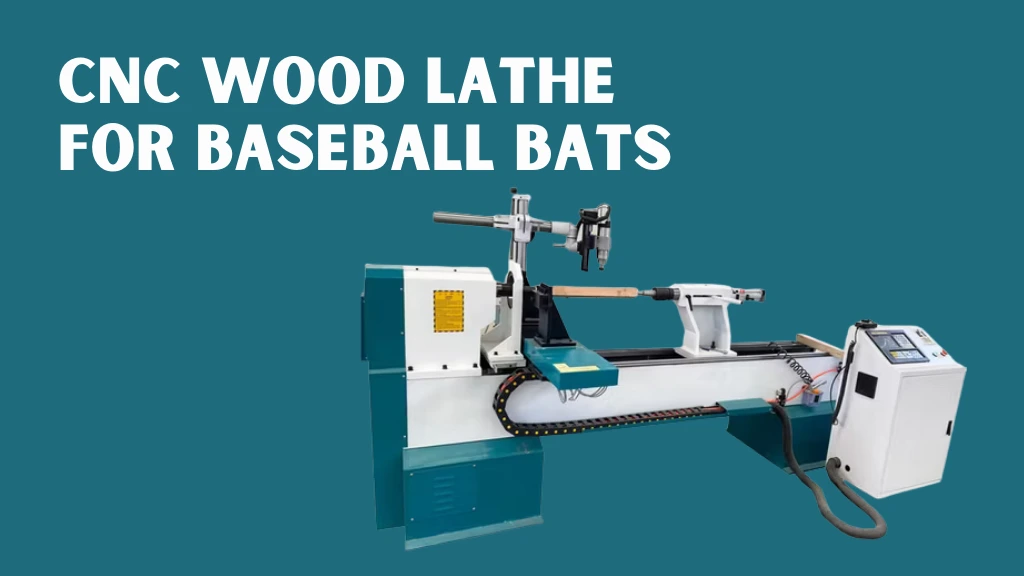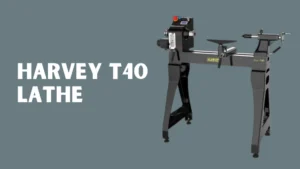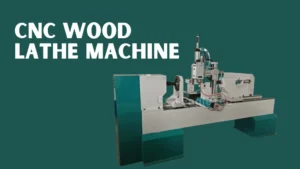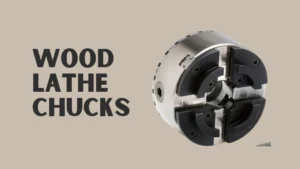Baseball bat manufacturing has evolved dramatically over the past few decades. From traditional hand-turning techniques to modern automated machinery, the industry has embraced technology to achieve higher levels of precision, consistency, and efficiency. One of the most significant advancements in this field is the CNC wood lathe for baseball bats, a tool that has transformed the way manufacturers and hobbyists produce high-quality bats. These machines combine the craftsmanship of woodworking with the accuracy of computer-controlled systems, ensuring each bat meets exact specifications and performance standards.
For hobbyists, small workshops, and large-scale manufacturers, understanding the capabilities and benefits of CNC wood lathes is essential. This comprehensive guide explores everything you need to know, from the types of machines available to the best practices for maintenance and production, helping you make informed decisions and optimize your baseball bat production.
What is a CNC Wood Lathe for Baseball Bats?
A CNC (Computer Numerical Control) wood lathe is a machine that automates the process of shaping and turning wood. In the context of baseball bat manufacturing, these lathes are designed to precisely carve bat blanks into finished products with consistent dimensions and a professional finish. Unlike manual lathes, which rely heavily on the skill and attention of the operator, CNC machines follow programmed instructions to achieve uniformity across batches.
The primary components of a CNC wood lathe include the spindle, which holds and rotates the bat blank, the tool turrets that house cutting and shaping instruments, the CNC controller that programs the machine’s movements, and the lathe bed and frame, which provide stability and reduce vibrations. By integrating these components, manufacturers can ensure each bat is produced with minimal errors and optimal performance.
Advantages of Using a CNC Wood Lathe
One of the key advantages of CNC wood lathes is precision. Manual turning, even by experienced craftsmen, can lead to slight variations in bat dimensions, which can affect weight distribution and hitting performance. CNC machines eliminate these inconsistencies by following programmed instructions accurately, producing bats that are identical in size, shape, and balance.
Efficiency is another significant benefit. CNC wood lathes can produce bats much faster than traditional methods. Depending on the complexity of the design and the type of wood, a single bat can be turned in five to fifteen minutes, making these machines suitable for both small-scale and large-scale production.
Customization is also easier with CNC lathes. Manufacturers can program the machine to create unique bat profiles, engrave names, logos, or team emblems, and even adjust the taper and handle thickness for specific player preferences. This flexibility allows businesses to meet niche market demands and provide personalized products without sacrificing efficiency.
In addition to precision and customization, CNC wood lathes reduce material waste. Accurate cuts and controlled shaping minimize the chances of errors, ensuring that the maximum amount of raw wood is utilized. This not only lowers material costs but also promotes sustainability in manufacturing processes. Safety is another advantage; automated operations reduce the need for manual intervention, lowering the risk of accidents and injuries associated with traditional lathes.
Types of CNC Wood Lathes for Baseball Bats
CNC wood lathes come in various configurations, each suited to different production requirements. Single-axis CNC lathes are the most basic and affordable option. They perform one operation at a time and are ideal for small workshops or hobbyists who produce bats in limited quantities. These machines provide precision and consistency without the complexity or higher cost of advanced models. Using a CNC wood lathe for baseball bats ensures that even entry-level setups can achieve uniform dimensions and professional-quality results.
Dual-axis CNC lathes are designed for higher efficiency. Featuring two turrets, these machines can perform multiple operations simultaneously, significantly reducing production time. They are particularly suitable for medium-scale manufacturers who need a balance between speed, precision, and investment cost. Dual-axis machines also provide the flexibility to handle moderate customization, making them a popular choice for small businesses aiming to scale up production.
Multi-axis CNC lathes represent the highest level of sophistication. They can handle complex bat profiles, intricate engravings, and multiple cutting angles simultaneously. These machines are designed for high-speed, large-scale production and are commonly used by professional manufacturers producing hundreds or thousands of bats annually. While the investment is higher, the efficiency, accuracy, and versatility offered by multi-axis lathes often justify the cost for serious businesses.
Materials Suitable for Baseball Bat Production
The type of wood used in a baseball bat significantly affects its performance, durability, and overall feel. Maple is a top choice among professional players because of its hardness and resilience, which allows for excellent power transfer and the ability to withstand repeated high-impact hits without cracking. Ash, on the other hand, is lighter and more flexible, offering better shock absorption and a different hitting experience. Birch provides a balance between hardness and flexibility, making it suitable for both amateur and professional players who need a versatile option.
When using a CNC wood lathe for baseball bats, manufacturers can fully exploit the natural properties of these wood types to produce precise, uniform bats. Hickory is extremely durable but heavier, making it ideal for power hitters who want maximum impact force. Bamboo is gaining popularity as an eco-friendly alternative, combining strength and flexibility while promoting sustainable production practices. Understanding these differences helps both manufacturers and serious hobbyists select the right wood to achieve optimal performance and consistency.
Operating a CNC Wood Lathe
Operating a CNC wood lathe involves a combination of programming, setup, and monitoring. The process begins with selecting a suitable wood blank based on the desired bat specifications and performance requirements. Once the material is chosen, the machine is programmed with the exact dimensions, taper, and design details for the bat. Modern CNC controllers allow operators to input these specifications with high precision, ensuring that each bat meets quality standards.
After programming, operators secure the wood blank in the spindle and check the alignment to ensure accurate turning. They then start the machine and monitor the turning process to confirm that the bat is shaped correctly. Once the primary turning is complete, operators perform additional finishing steps, including sanding, engraving, and applying protective coatings. These steps not only enhance the bat’s aesthetics but also improve durability and grip.
Proper operation requires attention to detail, but CNC machines are designed to simplify complex processes, making it possible for operators with basic training to produce professional-quality bats consistently.
Maintenance Tips for CNC Wood Lathes
Regular maintenance is crucial for the long-term performance and reliability of a CNC wood lathe for baseball bats. Operators should clean these machines frequently to remove wood dust and debris that can accumulate in moving parts, as this buildup can compromise precision and affect the quality of the finished bat. Lubricating spindles, guide rails, and gears ensures smooth operation, reduces wear, and helps maintain consistent turning accuracy. Cutting tools should be inspected regularly and replaced when worn to uphold professional-quality results.
In addition to physical upkeep, software updates are essential for maintaining optimal performance. Updates provide enhancements, fix potential bugs, and improve the machine’s programming capabilities. Periodic calibration of the lathe further ensures that each bat is produced with exact specifications, minimizing errors and material waste. Following a structured maintenance schedule not only prolongs the lifespan of the machine but also supports reliable, efficient production, which is vital for both professional manufacturers and serious hobbyists.
Common Challenges and Solutions
Despite their advantages, CNC wood lathes present certain challenges. The high initial investment can be a barrier for small workshops or hobbyists, but the long-term benefits in efficiency and quality often outweigh the upfront cost. Technical expertise is required to operate and maintain CNC machines effectively. However, manufacturers often provide training and support, and online resources are abundant for beginners.
Wood grain variability can affect the final product, making it essential to source high-quality, uniform wood blanks. Tool wear is another concern; dull or damaged tools can compromise precision and finish. Regular inspection and replacement of cutting tools mitigate this issue. Software compatibility is critical for seamless operation, and operators should ensure that design files and CNC programs are compatible with their machines. By addressing these challenges proactively, manufacturers can maximize the benefits of CNC technology.
Cost Considerations
The cost of CNC wood lathes varies depending on the type, features, and production capacity. Entry-level models designed for small workshops typically range from $5,000 to $10,000 and provide essential functionality for basic bat production. Mid-range dual-axis machines offer enhanced features, faster production, and moderate automation, with prices between $15,000 and $25,000. High-end multi-axis machines, which can handle complex operations and high-volume production, may cost $30,000 or more. When evaluating cost, it is important to consider long-term benefits, including labor savings, reduced material waste, and increased production efficiency.
Conclusion
The CNC wood lathe for baseball bats has fundamentally transformed baseball bat production. By combining precision, efficiency, and customization capabilities, these machines allow manufacturers and hobbyists to produce high-quality, professional-standard bats consistently. Selecting the right type of CNC lathe, understanding material properties, and following proper maintenance routines ensures optimal performance and product quality.
Whether you are producing bats for personal use, custom orders, or commercial distribution, investing in a CNC wood lathe enhances production speed, reduces waste, and enables creative design possibilities. As technology continues to advance, CNC wood lathes will remain a vital component of modern bat manufacturing, supporting both small-scale workshops and large professional operations.
FAQs
What does a CNC wood lathe do in baseball bat production?
It is a machine that automates shaping and turning wooden bat blanks, allowing for high precision, uniformity, and faster production compared to traditional manual methods. It is an essential tool for professional manufacturers and serious hobbyists.
Can beginners operate a CNC wood lathe?
Yes. With basic training, beginners can operate CNC wood lathes. Modern machines feature user-friendly interfaces, tutorials, and safety systems. Operators should understand wood properties and basic CNC programming to achieve optimal results.
How long does it take to produce a single bat using a CNC lathe?
Depending on the complexity of the bat design, type of wood, and machine speed, CNC wood lathes can produce a bat in five to fifteen minutes, allowing for consistent and efficient production.
Can baseball bats be customized using a CNC wood lathe?
Yes, CNC machines enable customization, including adjusting bat taper, engraving names or logos, and creating unique designs. This flexibility is valuable for personalized products and branded merchandise.
What maintenance is required for a CNC wood lathe?
Maintenance involves cleaning dust and debris, lubricating moving parts, inspecting and replacing worn tools, updating CNC software, and calibrating the machine regularly. These practices ensure consistent precision and long-term reliability.




